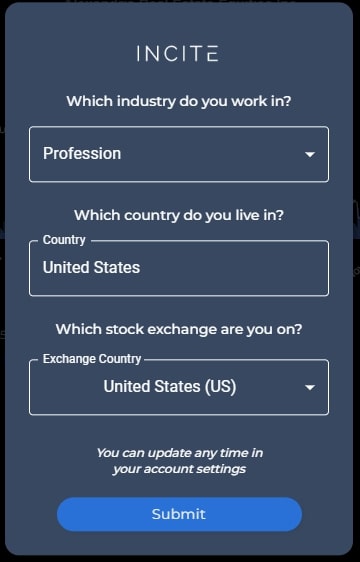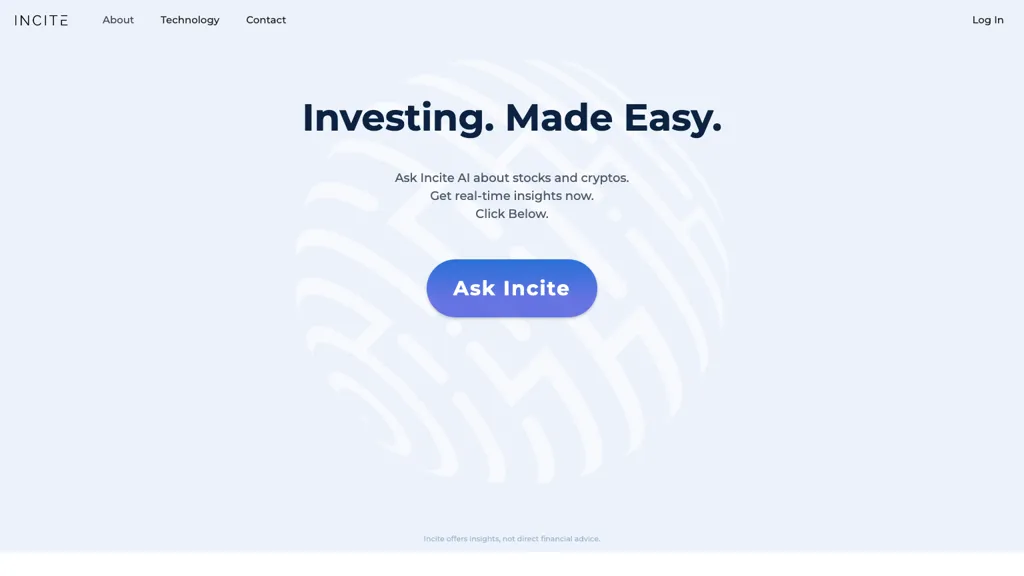The User Interfaces (UI) and the user experiences of AI-powered stock trading platforms are essential for their usability, efficiency as well as overall satisfaction and overall success. An ineffective user interface can hinder decisions, even when the AI models that underlie it are robust. Here are 10 tips to evaluate the user interface on these platforms.
1. Easy of use and intuitiveness are crucial factors to take into consideration.
Navigation: Ensure that the platform is easy to use, using buttons and menus that are easy to grasp and workflows that are easy to follow.
Learning curve - Determine how fast a user can grasp the platform and understand it with no extensive training.
Check for consistent designs (e.g. color schemes and buttons) across all platforms.
2. Look for customizability
Dashboard customization: Examine to see if it is possible to modify dashboards to show relevant data including graphs, metrics, and graphs.
Layout flexibility - Make sure that your platform is able to allow users the ability to rearrange or resize widgets and charts.
Themes and Preferences: Verify that the application supports dark or light modes, or other visual preferences.
3. Review Data Visualization
Chart quality: Check whether the platform provides interactive charts with zooming and panning functionality (e.g. line charts or candlestick charts, etc.).
Visual clarity: Ensure the data are presented clearly by using labels, legends and tooltips.
Real-time updates: Verify that the visualizations are updated in real-time, to reflect changes on the market.
4. Test Responsiveness and Speed
Loading speed: Ensure whether the platform is loading quickly, even with massive data sets.
Real-time performance: Check if the platform can manage real-time feeds of data with no delay or lag.
Cross-device Compatibility: Make sure that the application works with different gadgets (desktops or smartphones).
5. Examine the accessibility
Mobile App: Ensure that the platform has an application for trading via mobile with full functionality.
Keyboard shortcuts: Ensure that the platform supports keyboard shortcuts to the most powerful users.
Accessibility features: Determine if the platform complies with accessibility standards (e.g. screen reader compatibility, high-contrast modes).
6. Search and Filter Test functionality
Search performance: Make sure the platform allows users to quickly look up indexes, stocks, or other assets.
Advanced filters: See whether you can narrow your results by using filters (e.g. sector or market capital, performance metrics).
Saved searches. Check the platform's capability to permit users to save frequently used search terms, or filters.
7. Make sure you are aware of alerts and other notifications.
Individually customizable alerts: Users can create alerts based on certain situations, such as price thresholds and spikes in volume and news happenings.
Notifications delivery: Determine whether notifications can be sent via different channels (e.g. SMS, email and app notifications).
Timing: Check if alarms are activated quickly and accurately.
8. Integrate with other tools
Broker integration: Make sure the platform integrates seamlessly with your brokerage account to allow simple execution of trades.
API access: Discover the API access for advanced users. the API to develop their own customized tools or workflows.
Third-party platforms: Make sure to find out if your platform has the ability to connect to other apps (such as Excel Google Sheets or trading bots).
9. Assessment Help and Support Features
Onboarding Tutorials: Find out whether your platform provides tutorials or guides for new users.
Help center - Make sure that the platform comes with an extensive support center or knowledge base.
Customer support: See whether there is a quick customer support (e.g. chat on the internet, email, or phone).
10. Test for Overall Satisfaction of Users
Feedback from users Review and testimonials can be used to determine the general satisfaction of users with the platform UI/UX.
Trial period - Test the platform for free trial to test what it can do.
Error handling: Verify how the platform handles edge cases or errors (e.g. incorrect inputs, downtime of servers).
Bonus Tips:
Aesthetics is essential, a beautiful design can enhance the user's experience.
Performance under stress Test the platform in extreme market volatility to ensure it's solid and responsive.
Visit the forums and community to determine if there's an active forum or user group where users can share tips and give feedback.
The following tips can assist you in evaluating the UI/UX of an AI stock-Predicting/Analyzing trading platform and ensure that they're user-friendly efficient and in tune with your trading needs. A great UI/UX will assist you make better choices and manage your trades more efficiently. View the most popular ai for trading examples for site info including investing ai, ai investing platform, ai trade, AI stock market, ai for investment, best AI stock trading bot free, ai investment platform, stock ai, ai investing app, best AI stock and more.

Top 10 Tips For Evaluating The Latency And Speed Of Ai Trading Platforms
Speed and latency are crucial elements when it comes to looking at AI stocks and analyzing trading platforms, especially for active traders, algorithmic traders, and high-frequency traders. Millisecond delays can have an impact on the profitability of trading. Here are 10 top methods to gauge the speed and latency of trading platforms.
1. Real-time data feeds that are to be evaluated
Time to deliver data: The platform must provide real-time, accurate information within an extremely short time (e.g. with sub-millisecond delays).
Check the data source's proximity to most important exchanges.
Data compression: Find out if your platform utilizes efficient data compression techniques in order to accelerate the delivery of data.
2. Time to test trade execution
Order processing: The platform's capability to complete and process trades fast once an order has been submitted.
Direct market access (DMA) Make sure the platform offers DMA, which lets orders be made directly to the exchange, without intermediaries.
Reports on execution. Check if the platform offers comprehensive execution reports. These reports should include dates for order submission, confirmation, and fill.
3. Assess the Platform Response
User interface (UI) speed: See how quickly the platform's UI responds to your inputs (e.g. click buttons, loading charts).
Chart updates: Make sure you check if charts and visualizations update in real-time without lag.
Performance of mobile apps. If you're using a smartphone application you can expect it to run just as fast as the desktop version.
4. Look for low latency infrastructure
Server Locations: Select servers with low-latency that are near major financial centers or exchanges.
Co-location Services: Find out whether the platform supports co-location. This will allow you to save your trading algorithm on servers that are close to the Exchange.
High-speed networks - Verify that the platform utilizes fiber-optic high-speed networks or any other low-latency technology.
5. Evaluation of Simulation and Backtesting Speed
Check how quickly the platform analyses and processes old data.
The latency on platforms must be minimal enough to permit live simulations of trades in real time.
Parallel processing: Find out whether the platform makes use of parallel processing or distributed computation to speed complex calculations.
6. Examine API Latency
API response time: Determine how quickly the platform's API responds to requests (e.g., fetching market data, placing an order).
Rate limits. Check the API's rate limits in order to avoid any delays when high-frequency trading.
WebSocket support: Find out if the platform uses WebSocket protocols for real-time and low-latency data streaming.
7. Test Platform Stability During Loading
High-volume Trading: Play with large quantities of trading scenarios in order to see if the platform is stable and responsive.
Test your platform in periods of extreme market volatility.
Test your strategies for stress: See whether the platform has tools for stress testing your strategies in extreme circumstances.
8. Evaluation of Network and Connectivity
Internet speed requirements: To ensure maximum performance, ensure that your internet connection speed is at the speed of your preferred platform.
Redundant connections: Check if the platform can support redundant internet connections in order to avoid downtime.
VPN latency: If using a VPN, verify whether it has a significant amount of latency. Also, determine if the provider offers alternatives.
9. Check for Speed-Optimization Features
Pre-trade analysis: The platform should provide pre-trade analysis to help optimize process of routing orders and speed up execution.
Smart order route (SOR) : Check to see if SOR is used by the platform in order to determine the fastest and most cost-effective execution options.
Use the tools available on the platform to monitor and analyse latency in Real-Time.
Review User Feedback & Benchmarks
User reviews: Check for feedback from users on the site to gauge the speed and latency of the platform.
Third-party benchmarks. Find benchmarks that are independent, or reviews that compare a platform's speed with other platforms.
Case studies: Check if a platform has instances or case studies that highlight the low-latency features.
Bonus Tips:
Trial period: Try the demo or trial version for free to test the platform's speed and latency in real-world situations.
Support for customers: Make sure the platform provides support for customers to help optimize latency and other issues.
Hardware requirements. Check if the system is compatible with the hardware you are using like high-performance computers.
Utilizing these guidelines using these tips, you will be able to accurately assess the speed, latency, and precision of AI analysis and stock prediction systems. This will allow you to choose a platform that meets your needs for trading and minimize any delay. Low latency, especially for high frequency and algorithmic trading, is crucial. Even minor delays have the potential to significantly affect profitability. Follow the recommended ai tools for trading for blog info including best ai penny stocks, AI stock analysis, ai investment tools, investing with ai, stock trading ai, AI stock prediction, ai options trading, free ai tool for stock market india, stocks ai, can ai predict stock market and more.
